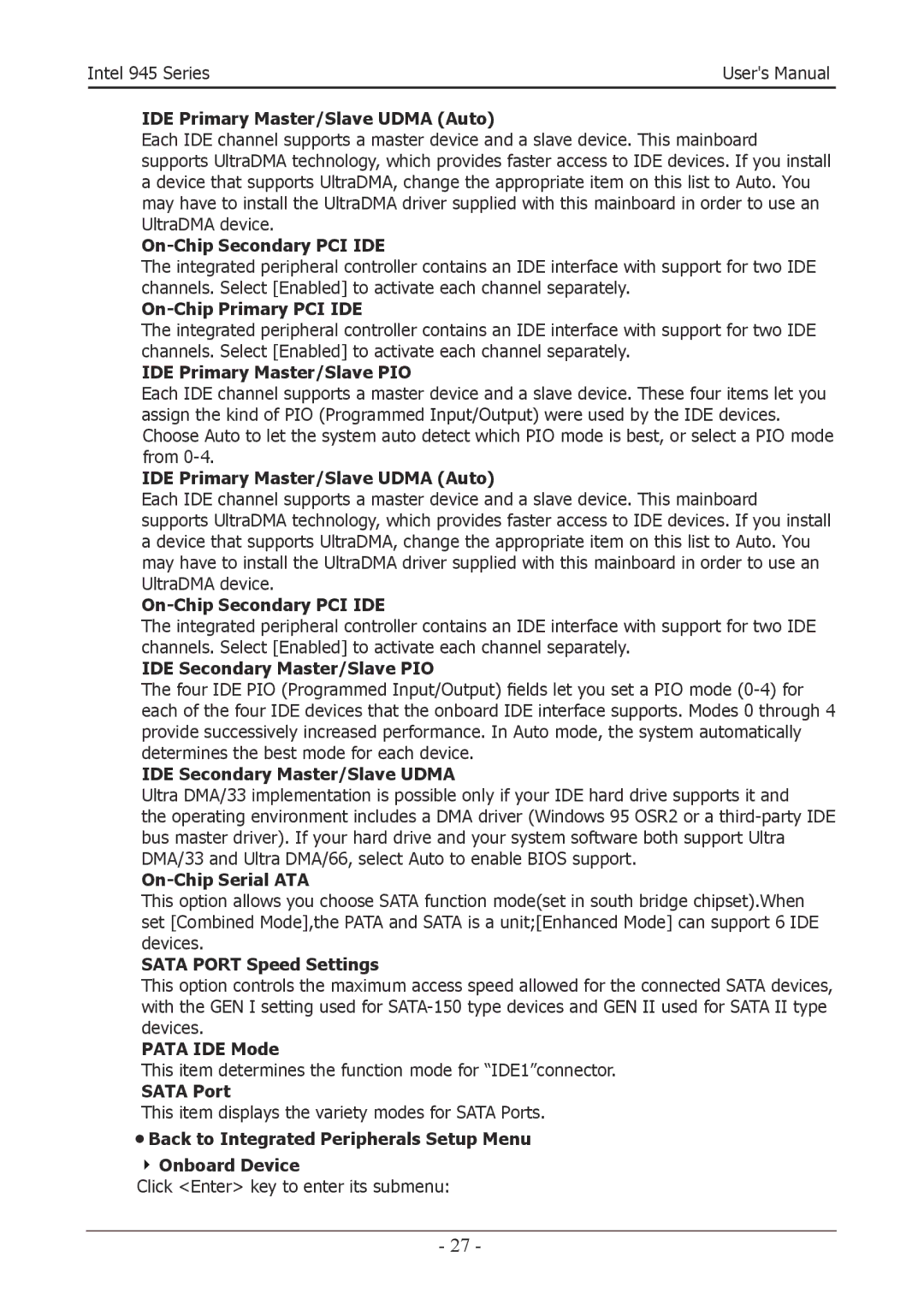
Intel 945 Series | User's Manual |
|
|
IDE Primary Master/Slave UDMA (Auto)
| Each IDE channel supports a master device and a slave device. This mainboard |
|
|
| supports UltraDMA technology, which provides faster access to IDE devices. If you install |
| |
a device that supports UltraDMA, change the appropriate item on this list to Auto. You
may have to install the UltraDMA driver supplied with this mainboard in order to use an
UltraDMA device.
On-Chip Secondary PCI IDE
The integrated peripheral controller contains an IDE interface with support for two IDE
channels. Select [Enabled] to activate each channel separately.
On-Chip Primary PCI IDE
The integrated peripheral controller contains an IDE interface with support for two IDE
channels. Select [Enabled] to activate each channel separately.
IDE Primary Master/Slave PIO
Each IDE channel supports a master device and a slave device. These four items let you
assign the kind of PIO (Programmed Input/Output) were used by the IDE devices. Choose Auto to let the system auto detect which PIO mode is best, or select a PIO mode from
IDE Primary Master/Slave UDMA (Auto)
| Each IDE channel supports a master device and a slave device. This mainboard |
|
|
| supports UltraDMA technology, which provides faster access to IDE devices. If you install |
| |
a device that supports UltraDMA, change the appropriate item on this list to Auto. You
may have to install the UltraDMA driver supplied with this mainboard in order to use an
UltraDMA device.
The integrated peripheral controller contains an IDE interface with support for two IDE
channels. Select [Enabled] to activate each channel separately.
IDE Secondary Master/Slave PIO
The four IDE PIO (Programmed Input/Output) fields let you set a PIO mode
each of the four IDE devices that the onboard IDE interface supports. Modes 0 through 4
provide successively increased performance. In Auto mode, the system automatically
determines the best mode for each device.
IDE Secondary Master/Slave UDMA
Ultra DMA/33 implementation is possible only if your IDE hard drive supports it and
the operating environment includes a DMA driver (Windows 95 OSR2 or a
bus master driver). If your hard drive and your system software both support Ultra
DMA/33 and Ultra DMA/66, select Auto to enable BIOS support.
On-Chip Serial ATA
This option allows you choose SATA function mode(set in south bridge chipset).When
set [Combined Mode],the PATA and SATA is a unit;[Enhanced Mode] can support 6 IDE |
|
devices.
SATA PORT Speed Settings
This option controls the maximum access speed allowed for the connected SATA devices,
with the GEN I setting used for
devices.
PATA IDE Mode
This item determines the function mode for “IDE1”connector.
SATA Port
This item displays the variety modes for SATA Ports.
• Back to Integrated Peripherals Setup Menu
►Onboard Device
Click <Enter> key to enter its submenu:
- 27 -
